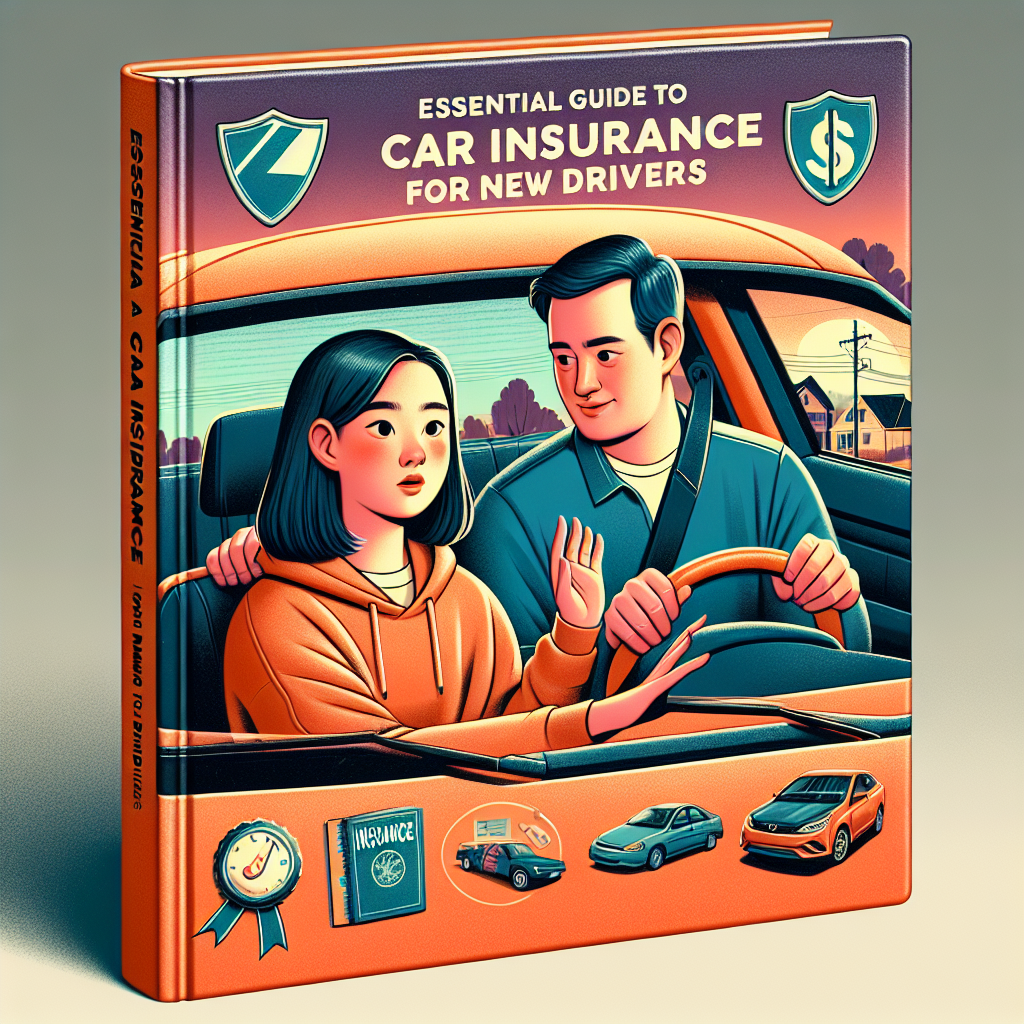===INTRO:===
Car insurance for new drivers can often feel overwhelming. As you navigate this new territory, the stakes are high—not just for your wallet, but for your peace of mind on the road. Whether you’re a teen behind the wheel for the first time or a mature driver returning after a hiatus, the complexities of car insurance can create anxiety. The fear of making a costly mistake or overpaying for coverage looms large. However, understanding the nuances of car insurance can transform that anxiety into confidence. This guide aims to equip you with essential knowledge that can not only save you money but also ensure you are adequately protected while driving.
Navigating the Basics of Car Insurance for New Drivers
Understanding the fundamentals of car insurance is the first step for new drivers. Car insurance is not just a legal requirement; it’s a critical layer of financial protection against unforeseen circumstances. It typically consists of several types of coverage, including liability, collision, and comprehensive plans. Liability insurance covers damages to another person’s property or medical expenses resulting from an accident for which you are at fault. Collision coverage, on the other hand, takes care of damages to your own vehicle, while comprehensive coverage protects against non-collision incidents like theft or natural disasters.
For new drivers, the cost of car insurance often comes as a shock. Insurance providers view inexperienced drivers as higher risk, which can lead to premiums that feel sky-high. However, it’s important to note that rates may vary significantly based on several factors, including the type of vehicle you’re insuring, your location, and even your driving history, which might be limited in your case. Additionally, many companies offer discounts for good grades, completing a driver’s education course, or bundling policies. Familiarizing yourself with these elements can help you make informed decisions.
New drivers should also be aware of common misconceptions surrounding car insurance. One prevalent myth is that the cheapest policy is always the best choice. However, opting for a low-cost plan may leave you underinsured, exposing you to potential financial loss after an accident. Another misconception is that you can skip coverage altogether if you drive an older vehicle. While older cars may not require as much coverage, having adequate insurance is still essential to protect your investment and your finances. By understanding these basics, new drivers can better approach their insurance needs with a clear perspective.
Key Considerations for Choosing the Right Coverage Options
Choosing the right coverage options can be an intricate process, yet it is essential for new drivers to cover all bases. First, consider your unique circumstances—such as your driving habits, the area where you live, and the type of vehicle you drive. If you frequently navigate busy city streets, for instance, higher liability coverage may be warranted. Conversely, if you live in a rural area with less traffic, you might opt for minimal coverage. Understanding your environment can guide you toward the most suitable policy.
Another important consideration is the deductible associated with your insurance plan. The deductible is the amount you agree to pay out-of-pocket before your insurance kicks in for a claim. A higher deductible typically results in lower monthly premiums, which might seem appealing. However, new drivers should evaluate their financial situation before choosing this option—if you’re involved in an accident, having to pay a hefty deductible can strain your budget. Striking the right balance between premium costs and deductible amounts is crucial for long-term financial health.
Lastly, it’s vital to shop around. Different insurers have different rates, and a small amount of research can result in substantial savings. Utilize online comparison tools to see multiple quotes side by side, and don’t hesitate to reach out to agents for tailored advice. Many companies offer personalized assistance to help you choose coverage that meets your needs. Moreover, building a relationship with an insurance agent can lead to additional benefits, such as customized discounts or loyalty programs, that can enhance your overall experience.
===OUTRO:===
In conclusion, gaining a solid understanding of car insurance for new drivers is akin to laying the foundation for a safe driving future. By navigating the fundamentals and carefully considering your coverage options, you can empower yourself to make informed decisions that protect both your finances and your peace of mind. It’s not just about meeting a legal requirement; it’s about ensuring that you are adequately protected while enjoying the freedom of the open road. Take the time to research and compare, consult with experts, and don’t hesitate to ask questions—your driving experience deserves the best coverage possible. Whether you’re just starting out or looking to reassess your current policy, the right information can lead to significant savings and enhanced security. Explore your options today and drive with confidence!
Understanding Home Insurance Requirements Across CanadaUnderstanding Home Insurance: What Coverage Do You Need?Understanding Reasons for Car Insurance Claim DenialsRelevant LinkRelevant LinkRelevant LinkUnderstanding Canada’s Insurance Bank: A Comprehensive GuideUnderstanding Insurance Broker Salaries in Canada: A GuideUnderstanding Canada’s Insurance Coverage for Breast PumpsRelevant LinkRelevant LinkRelevant LinkUnderstanding Canada Travel Insurance for Pre-Existing ConditionsAffordable Visitor Health Insurance Options in Canada ExploredExploring Canada’s Leading Insurance Companies: A Comprehensive GuideRelevant LinkRelevant LinkRelevant Link
